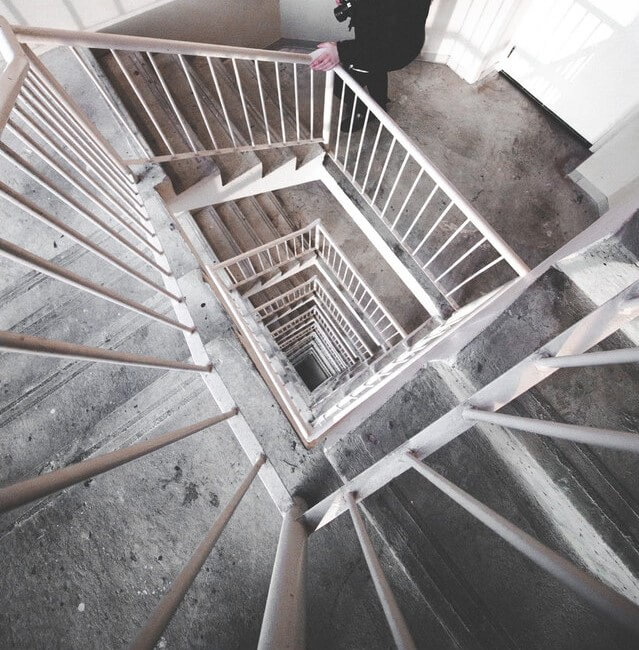A staircase is an important part of a building structure. Generally, a stair means a series of steps that lead from one floor to another floor in a building. There are different types of stairs used in a building depending on the purpose and kind of the building. The room in which the stairs are located is named the staircase, and the space occupied by the stairs is known as the stairway.
Different Types of Stairs Used in Building
Stairs may be classified under the following two headings:
a) Classification Based on Stair design.
b) Classification Based on Material used for the construction of a stair.
a) Classification Based on Stair design
Based on stair design, they are classified into several types. In this article, I will discuss the 15 types of stairs that are commonly used in buildings. In this category, the most commonly used types of stairs are straight stairs, dog-legged stairs, continuous stairs, and U or L-shaped stairs. The classification of the stairs is as follows with a simple elaboration of each kind.
1. Straight Stairs
2. Dog-legged Stairs
3. Continuous Stairs
4. Bifurcated Stairs
5. Quarter turn Stairs
6. Circular Stairs
7. Helical Stairs
8. Spiral Stairs
9. Winder Stairs
10. Open Newel Stairs
11. Ladder Stairs
12. Geometrical Stairs
13. Curved Stairs
14. U-shaped Stairs or Half-turn stairs
15. Three turn Stairs
1. Straight Stairs
The simplest types of stairs which can be used in a building are straight stairs, in which all the steps lead in one direction and in a continuous form. This type of staircase is generally used where there is a narrow or scarcity of space.
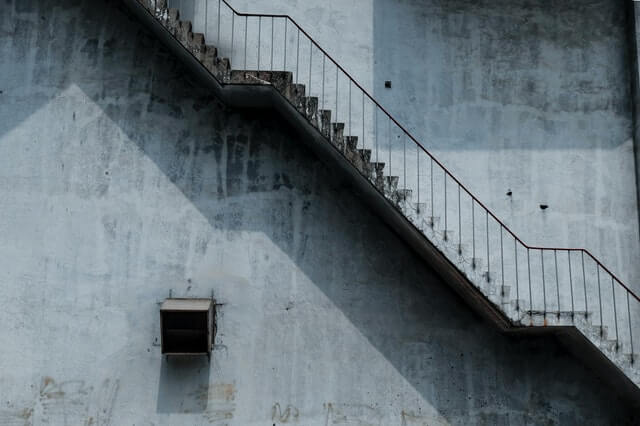
Generally, it consists of one flight, sometimes it may be split into two or more than two flights by providing a landing between two flights. Straight stairs follow a single linear flight with no change in direction. This type of staircase generally does not require any additional support and is very easy to take measurements and design accordingly. Read Also: Requirements of a Good Stair.
2. Dog-legged Stairs
The name of this type of stair can give us an idea of its special features. Generally, its directions are reversed or changed for 180 degrees as they are half-turn stairs and they appear as dog legs in its sectional elevation. These common types of stairs consist of two straight flights running in the opposite direction leaving no space between the flights in plan.

3. Continuous Stairs
The unique feature of this type of stair can be imaginable from its name only. These types of stairs are geometrical in shape and do not contain any landing or any intermediate newel post. Examples: circular stairs, helical stairs, etc.
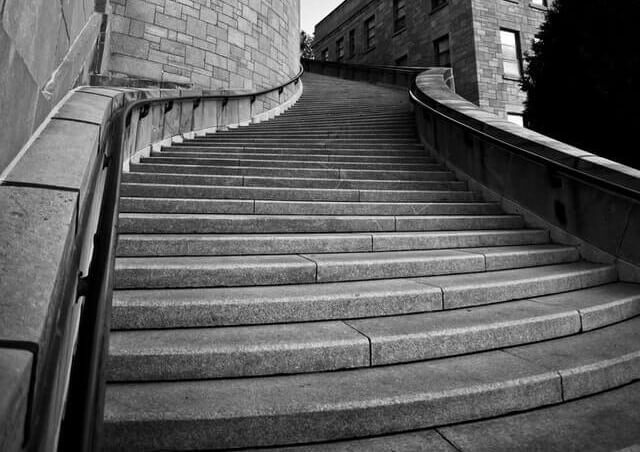
4. Bifurcated Stairs
Do you all remember that grand stylish iconic staircase of the Hollywood movie Titanic? Those are called bifurcated stairs which are bifurcated into two smaller flights of stairs going in opposite directions with the help of quarter-turn mid-landing. These iconic types of staircases are generally used in modern houses where huge space is available.
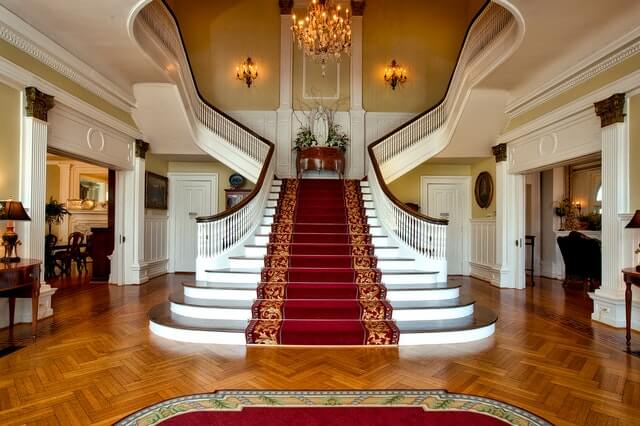
5. Quarter-turn stairs
When the classic straight stairs in a building are turned at 90 degrees with the help of a level landing following either right or left direction, it is known as quarter turn stairs. This particular type of stairs is more attractive than ordinary straight stairs. But, it is hard to carry large objects up and down through this type of stairs, and is also harder to assemble than the straight stairs and sometimes it requires support for the landing. This type of stair looks like the English alphabet ‘L’, which is why it is also known as an L-shaped stair.
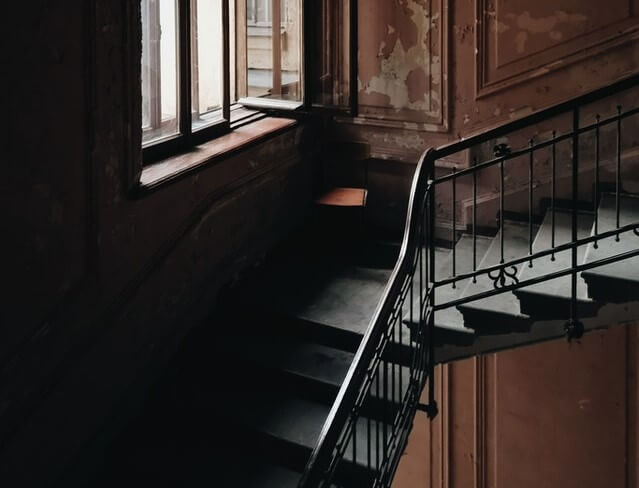
6. Circular Stairs
Generally made of R.C.C material or of Metal and is used in a place where there are space limitations. The steps are winders, generally located at the rear of the building and that’s why provides discomfort in using it. These types of stairs are mostly used in the backside of the building as emergency Stairs. Read Also: Moving Stairs.

7. Helical Stairs
This genre of stairs looks very fine but the structural design and its construction are very complicated. Generally, the material used in constructing this type of stairs is R.C.C. material in which a large portion of steel is required to resist bending, shear, and torsion.

8. Spiral Stairs
This type of stair is generally visible in old heritage buildings. The design of this type of stairs is compact with a single handrail which perfectly forms the shape of a circle if one observes it from the top of the stairs. This type of stair is more affordable and easy to install and gives the building a vintage look too. Though these types of stairs are difficult to navigate and can be used only by one person at a time. It can conflict with fire and safety issues too, and is also difficult to carry large objects up and down. This type of stair is also used in the backside of the building as an emergency stair.

9. Winder Stairs
Broadly winder stairs are somewhat like a similar or slightly complicated version of L or U-shaped staircases. Winder takes the place of the landing to save space.
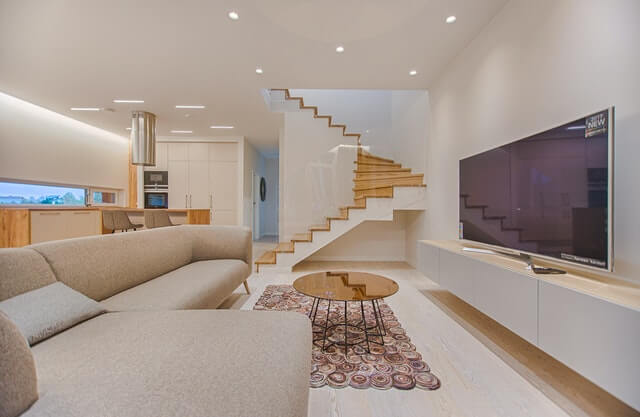
10. Open Newel Stairs
This type of stair has clearly visible space at the beginning of the flight as well as at the end. The opening is generally of rectangular shape and it can be used for the installation of lifts in a building. The feature of this type of stair is of requirement of more space than the twice the width of the steps.
11. Ladder Stairs
Ladder Stairs are usually incorporated in tiny houses to use that extra square feet of space without interruption. This may be made of wood, metal or bamboo. Small house owners these days follow this type of structure while building stairs. Read Also: 20 Types of Ladders.
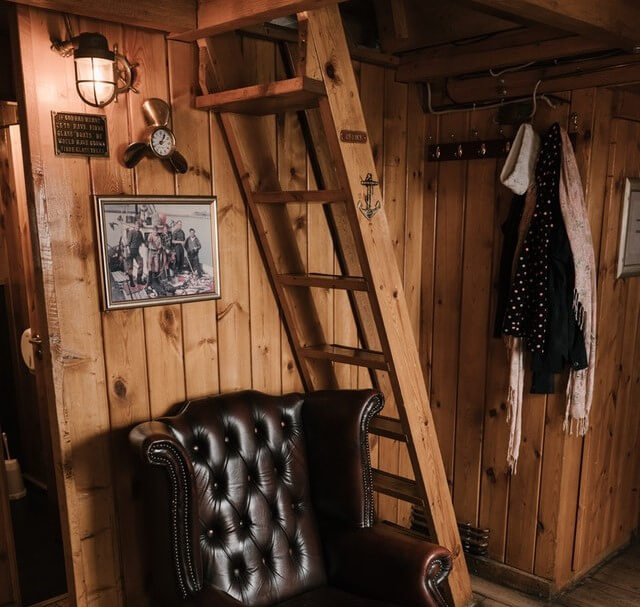
12. Geometrical Stairs
This particular type of stairs is similar to the Open Newel Stairs –
i) This type of stair has any type of geometrical shape.
ii) They require no newel posts.
iii) The space between the backward and forward flight is curved.
iv) The handrail of such stairs is uninterrupted without any angular turn i.e. straight handrail is used in this type of stair.
13. Curved Stairs
This particular architectural type of stairs is mostly like of winder or L-shaped stairs which have particularly no landings and is a continuing one. The speciality of this type of stair is the bending of the handrail which gives it an awestruck statement of architecture and elegance. It is easy to navigate through. But, on the contrary, it is one of the most difficult staircase configurations to build and the large size of the stairs requires open, broad spaces.

14. U-shaped Stairs or Half-turn stairs
This particular type of stair is easy to access and can be found in most of the places. This is similar to the L-shaped stairs. There is a landing space available between the two parallel flights of stairs which separates them and the bend available between the two flights of stairs forms a full U shape, for which this type of stairs are called U-shaped stairs or Half-turn stairs. These types of stairs are easy to incorporate in a small space and are visually more interesting than the straight or 90-degree staircases.

15. Three turn Stairs
